Amazon frogbit (Limnobium laevigatum) is a popular floating aquatic plant from the Hydrocharitaceae family, often chosen by aquarium hobbyists for its ease of care and appealing appearance. Its smooth, round, glossy green leaves float effortlessly on the water’s surface, creating a lush, natural cover. Under optimal conditions, this plant can quickly spread, covering the entire surface of the aquarium. Regular pruning is necessary to control its growth and maintain balance in your tank.
In addition to its attractive foliage, Amazon frogbit produces delicate white flowers, adding a decorative touch to aquariums and ponds. However, while its beauty makes it an excellent choice for aquascaping, it’s important to manage this plant carefully. If left unchecked, it can become invasive, overtaking your aquarium or even natural ecosystems if introduced into the wild. Always exercise caution when introducing Amazon frogbit to new environments to avoid unintended ecological impacts.

Contents
Plant origin
Scientific name of the kind was fist published in 1814 in the article of a French plant biologist Louis Claude Marie Richard in the 12th issue of Mémoires de la Classe des Sciences Mathématiques et Physiques de L’Institut National de France. The name originated from Greek word λιμνόβιος, limnóbios — ‘dwelling in a lake’.
Natural habitat of the kind is on South-East of the USA (its northern boarder – Illinois, Indiana and West Virginia) as well as Central America and North part of South America. Amazon frogbit was brought to California, where it spread rather wide by pushing out local aquatic plants.
In ecology this kind is expanded in ponds and bogs with lentic or slowly flowing water. The plant stands temperature drop up to ground frosts.
Within its natural habitat, Limnobium typically grows in shallow water with calm or slow-flowing conditions. It thrives in areas with abundant sunlight and nutrient-rich waters. The plant often forms dense floating mats or clusters on the water surface, providing shade and shelter for various aquatic organisms.
Amazon frogbit has been introduced to other parts of the world as an ornamental plant for ponds and aquariums. In some areas, it has become an invasive species, negatively impacting native ecosystems. Therefore, it is important to manage its cultivation and spread to prevent any adverse effects on local water bodies.
In the United States, the management of Amazon frogbit primarily revolves around preventing its spread and controlling its population in areas where it has become invasive. If frogbit were to be classified as an invasive species in the future or if it poses a threat to California’s ecosystems, the CDFA may develop management strategies to address its control and eradication.
| Scientific Name | Limnobium laevigatum |
| Family | Hydrocharitaceae |
| Common names | Amazon frogbit West Indian spongeplant South American spongeplant |
| Native To | USA |
| Lighting Needs | Hight |
| Growth rate | Hight |
| CO2 | No |
| Fertilizers | Yes |
| Temperature Required | 20-30 °C |
| pH Level | 6.0-7.5 |
| Care Level | Moderately demanding |
| Placement in Tank | Floating plant |
| Maximum plant size | leaves are 1,5-3 cm long and up to 0,5 cm thick |
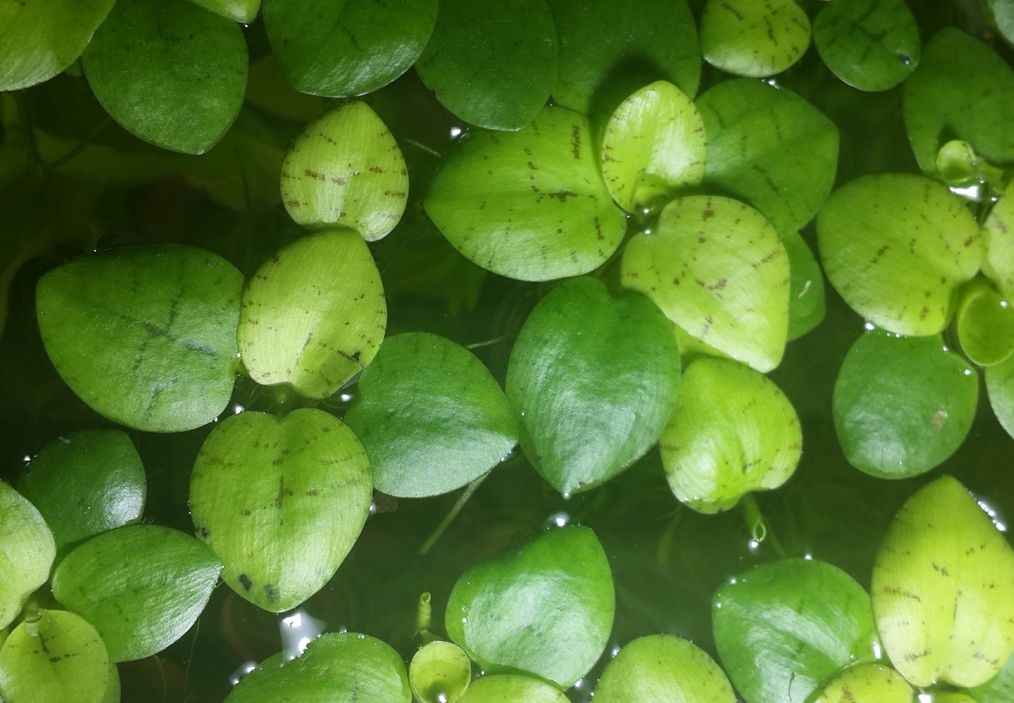
Description
Amazon frogbit has round to egg-shaped leaves that resemble floating coins. The leaves, which measure 1.5-3 cm in length, are thick and spongy underneath, allowing them to float easily. The top of the leaf is a bright green, while the underside has a silvery appearance due to air chambers that help keep the plant buoyant. The plant’s root system is robust, with long, fibrous roots that dangle beneath the water, capturing fine organic matter and providing shelter for fish fry.
The plant’s small white flowers are typically dioecious, meaning male and female flowers are on separate plants, although some plants may also have monoecious flowers
Developed root system forms thick hanging bunches. The roots may grow very long if compared to the remaining part of the plant. They serve not only as a perfect shelter for fish juveniles, but as efficient biological filter as well.
The roots capture the smallest organic particles and other fine organic rubbish; they serve as nutrients for the plant. The plant blossom is thin with elongated petals. Its dioecious or monoecious flowers are either on the same plant or on different plants. The plant has only emersed form.
Amazon frogbit has fibrous roots which perfectly clean tank water from suspended matter. Due to its unpretentiousness the plant is rather widespread among aquarists. In home tanks you can make it grow uniformly during the whole year round.
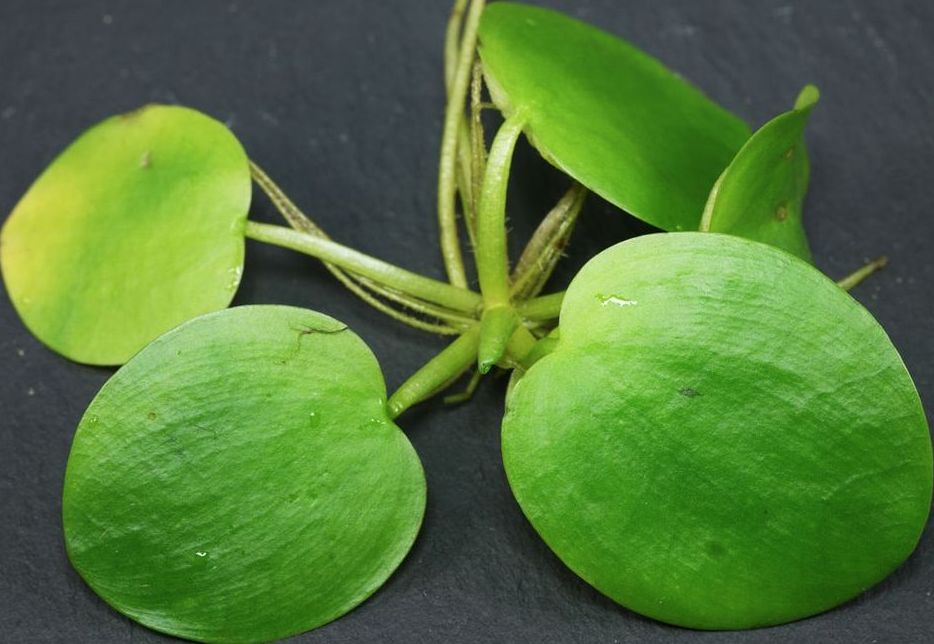
Difficulties in keeping
Amazon frogbit is quite easy to keep. It grows at almost any conditions and it has high growth rate (like hornwort). Provided with good illumination and sufficient amount of nutrients the plant can cover all tank surface with its leaves.
But it doesn’t mean that you can leave this plant unattended.
Aggressive large fishes can eat up the plant roots and leaves, so such tank mates are harmful for the plant. Besides, to create optimal humidity level it is recommended to cover the tank.
However, plant can successfully grow in open tanks as well.
Amazon frogbit has the ability to absorb excess nutrients from the water, helping to reduce algae growth. It also oxygenates the water by releasing oxygen during photosynthesis. By using Amazon frogbit, you can improve water quality and provide a healthier environment for the aquatic inhabitants.
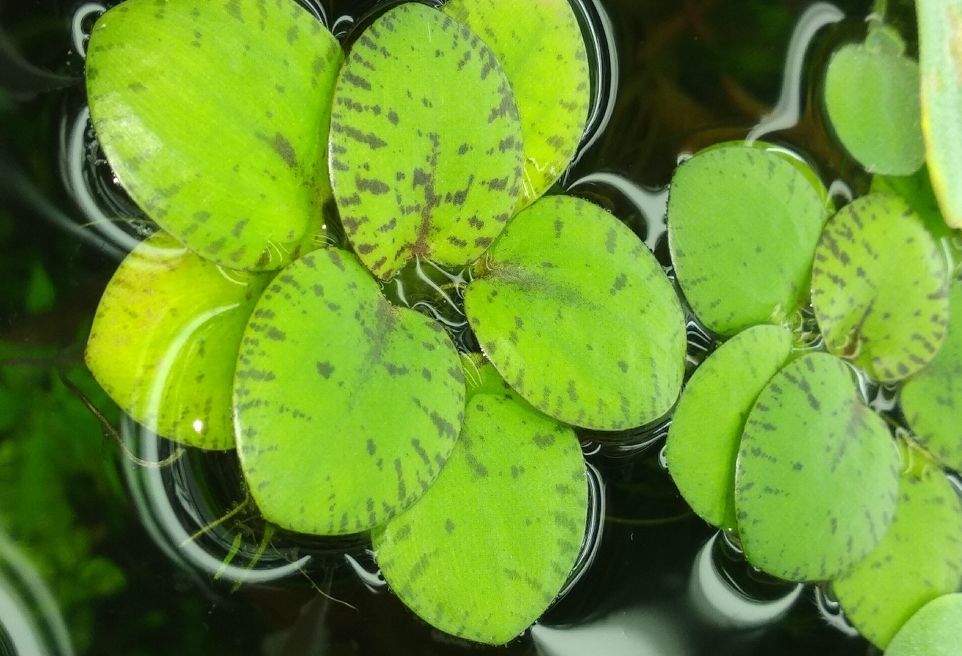
Care and keeping in a tank
Amazon frogbit is highly adaptable and easy to care for, making it a popular choice among aquarists. Under optimal conditions, it can quickly cover the surface of an aquarium, providing both aesthetic value and functional benefits, such as reducing algae growth by absorbing excess nutrients and releasing oxygen during photosynthesis.
The floating leaves of Amazon frogbit are capable of growing rapidly. They can increase in size by several inches within a week or two, depending on the conditions. The plant will continuously produce new leaves as the older ones age and die off.
Plant can serve as a useful indicator plant for monitoring water parameters in an aquarium or pond. Changes in its growth and appearance can provide insights into the overall water quality.
Light requirements
Amazon frogbit thrives under bright light, particularly in natural sunlight, which allows the plant to reach its maximum size. In aquariums, full-spectrum LED or fluorescent lights are recommended, with a photoperiod of 8 to 12 hours per day. Avoid placing light sources too close to the plant to prevent leaf burn.
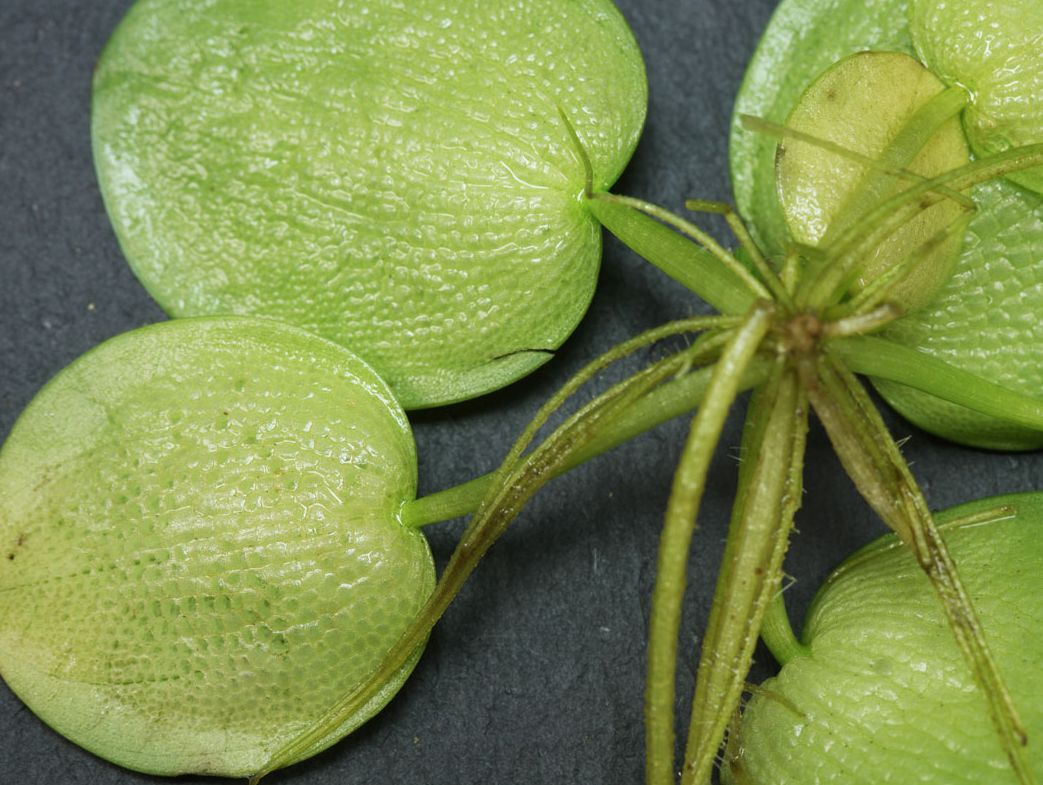
Water temperature
It is comparatively undemanding plant in terms of temperature conditions. It can be kept in tropical and moderately warm tanks at temperature from 20 to 30 °C. But it prefers tropical or subtropical climates where the water remains within this temperature range. In colder water the plant grows sufficiently slower and the plant gets smaller.
While it can tolerate slightly cooler or warmer temperatures for short periods, prolonged exposure to temperatures outside this range may negatively affect its growth and overall health. It’s important to maintain the appropriate temperature range when cultivating Amazon frogbit in aquariums or ponds to ensure optimal conditions for its growth.
Water parameters
Amazon frogbit grows best in slightly acidic to neutral water (pH 6.5 to 7.5). Changes in pH can impact the health of Amazon frogbit. It tends to prefer soft water with low hardness (KH below 12°).
If the plant’s leaves develop yellowing, stunted growth, or browning edges, it may indicate pH fluctuations. Monitoring and adjusting the pH within this range can help maintain the plant’s health.
In soft water frogbit grows a bit better, than in hard one. Preferable water hardness shouldn’t exceed 10 – 12° KH. If Amazon frogbit’s leaves start to develop yellowing or browning, it may indicate water hardness issues. The plant may struggle to absorb essential minerals such as calcium and magnesium from the water. Adjusting water hardness or supplementing with appropriate minerals can help resolve this issue.
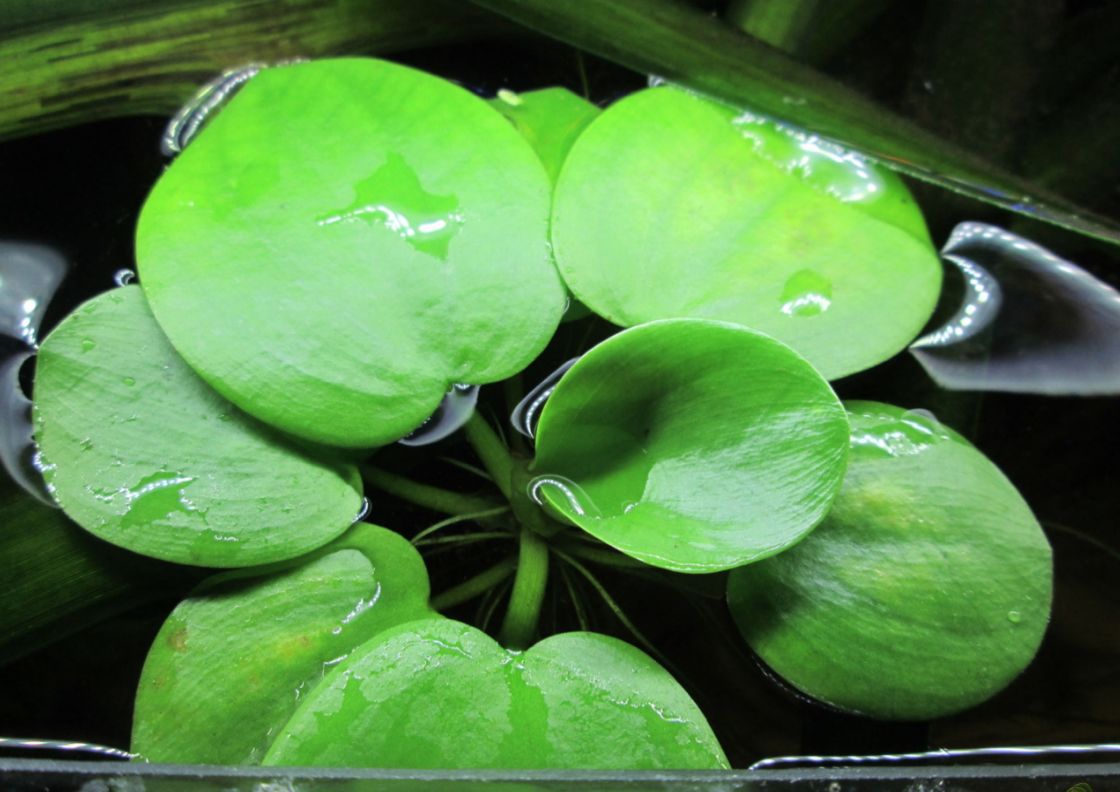
Nutrient levels
Amazon frogbit is sensitive to nutrient levels in the water. If the plant starts showing excessive growth, with large, lush leaves and rapid reproduction, it may indicate an abundance of nutrients, particularly nitrates and phosphates. This could be a sign of high nutrient levels in the water, possibly due to overfeeding, excessive fish waste, or inadequate nutrient uptake by other aquatic plants.
Substrate
Hanging straight roots of Amazon frogbit don’t need a substrate, that’s why its characteristics are not significant for the plant. It gets all nutrients and mineral feed from water.
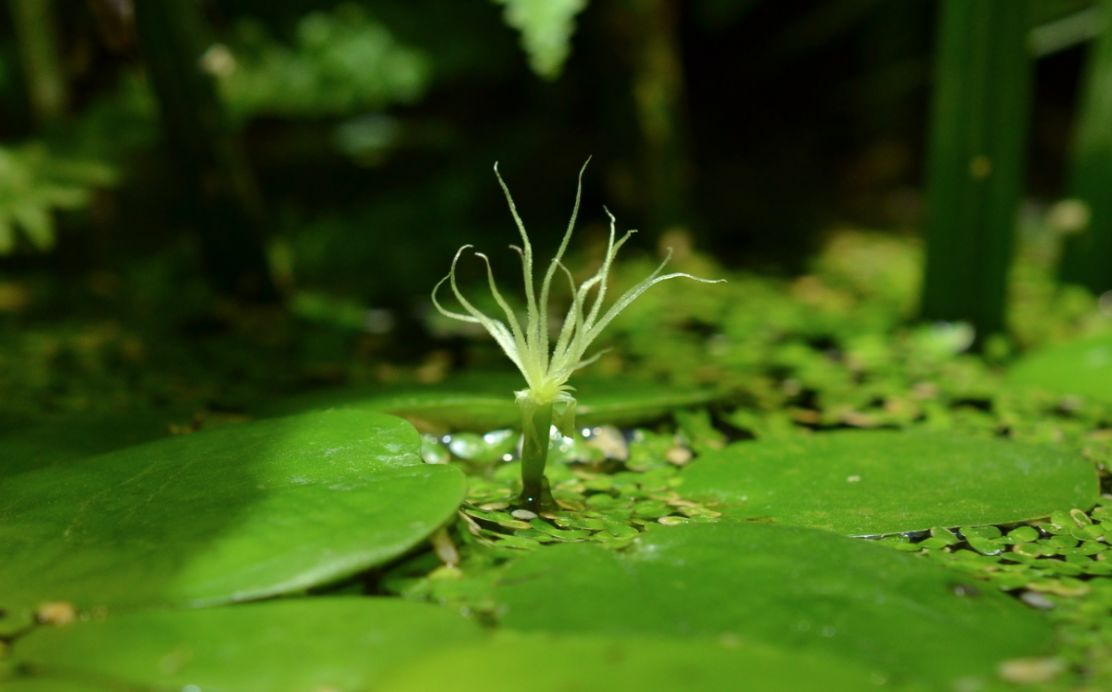
Propagation
Amazon frogbit reproduces easily through vegetative propagation. Small daughter plants form at the ends of the main plant’s runners and can be separated once they develop roots and leaves. These new plants can be placed in other parts of the aquarium or pond to encourage spread. While sexual reproduction through flowers is possible, it is rare in controlled environments.
Limnobium laevigatum can be propagated through various methods, including vegetative propagation and sexual reproduction.
- Plant can produce small flowers that contain both male and female reproductive organs. Sexual reproduction occurs when the flowers are pollinated, and seeds are formed.
- Vegetatively. Can produces small daughter plants attached to the main plant. These daughter plants can be separated from the parent plant once they have developed their own set of roots and leaves. Gently detach the daughter plant from the parent plant and place it in a suitable location in the aquarium or pond.